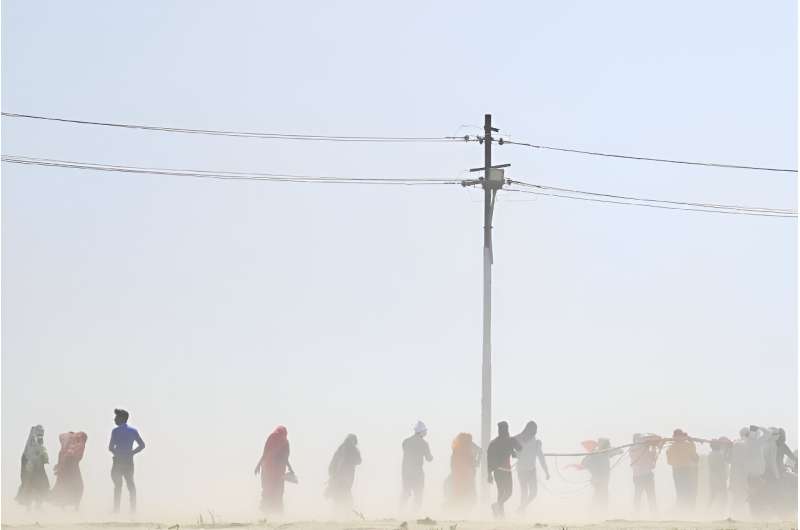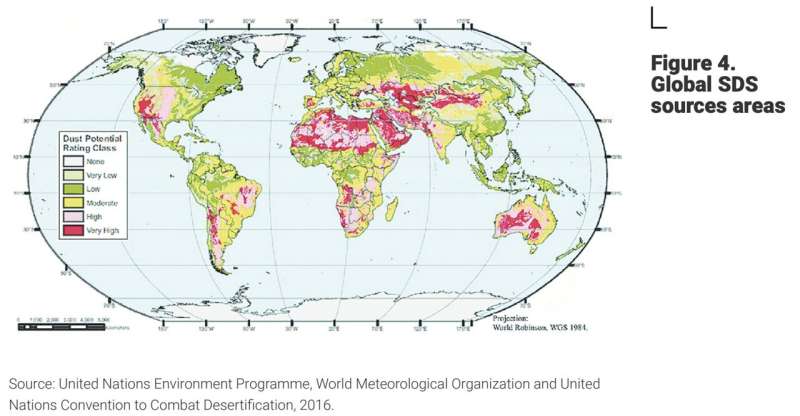This article has been reviewed according to Science X's editorial process and policies. Editors have highlighted the following attributes while ensuring the content's credibility:
fact-checked
reputable news agency
proofread
Threat from sand and dust storms spreading: UN

The UN warned Wednesday that the number of sand and dust storms are increasing "dramatically" with Central Asia the most hit by the dangerous phenomenon.
Toxic sand storms plague parts of desert and steppe covered Central Asia and North Africa and the UN called them a threat to life.
The UN's Convention to Combat Desertification (UNCCD) is meeting for five days in the historic city of Samarkand, just under a week before the COP28 climate change summit opens in Dubai.
"The sight of rolling dark clouds of sand and dust engulfing everything in their path and turning day into night is one of nature's most intimidating spectacles," said UNCCD Secretary Ibrahim Thiaw.
"It is a costly phenomenon that wreaks havoc everywhere from Northern and Central Asia to sub-Saharan Africa."
The agency said the storms impact areas far beyond their origin and that in some parts of the globe "desert dust doubled in the last century."
"An estimated two billon tons of sand and dust now enters the atmosphere every year, an amount equal in weight to 360 Great Pyramids of Giza," it added.
It said at least a quarter were attributable to human activity, but lamented that global recognition was low and data limited.

The experts warned the storms can have "life threatening" effects, but governments lack the means to effectively combat them.
"Fine dust particles are carried to high tropospheric levels (up to a few kilometers high) where winds can transport them over long distances," the statement said.
Last month, AFP met residents in neighboring Tajikistan who suffered respiratory and other health problems doctors said were caused by the storms.
Previously rare, such storms now start in spring and continue into the autumn in large parts of Central Asia.
The storms often start out in the dried-out stretches of the Aral Sea in Uzbekistan but also in the Kazakh steppes and neighboring Afghanistan.
The UNCCD also pointed to the economic damage the storms cause.
"The world loses nearly a million square kilometers of healthy, productive land every year," it said.
Between 2015-2019, some 4.2 million square kilometers (1.6 million sq. miles) were affected around the globe—equivalent to the combined size of all five ex-Soviet Central Asian countries, the UNCCD said.
© 2023 AFP




















